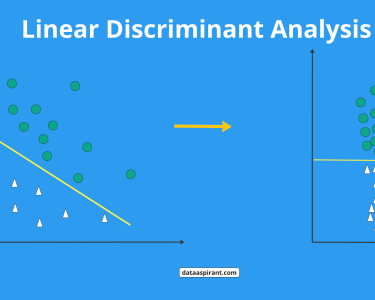Imagine a tightrope walker performing above a crowded street. Every step is a decision between balance and collapse. Similarly, in machine learning, every prediction walks that same rope between right and wrong and every misstep carries a cost. The confusion matrix, often seen as a grid of numbers, is in fact a financial balance sheet of machine intelligence. When we assign real-world values to its outcomes, the abstract art of prediction turns into a concrete exercise in profit, loss, and risk management.
Seeing Beyond Accuracy: When Numbers Meet Consequence
Most people judge a model by its accuracy a comforting, single number that feels conclusive. But accuracy can be deceptive. Imagine a hospital model that correctly predicts 95% of patients are healthy, but misses 5% who actually have a severe disease. On paper, the system looks impressive. In practice, those 5% represent lives at risk and perhaps millions lost in lawsuits or missed interventions.
This is where the confusion matrix truly shines. It breaks predictions into four outcomes: true positives, false positives, true negatives, and false negatives. Each carries a consequence, like financial ledgers in a business. For learners enrolled in a Data Analyst course in Delhi, understanding this matrix goes beyond mathematics it becomes an exercise in ethical and economic decision-making, where every cell tells a story of impact.
Assigning Value to Mistakes and Successes
Let’s step into the shoes of a bank approving loans an accurate positive means granting credit to a trustworthy customer a win. A false positive, however, means lending to someone who defaults a costly error. A false negative might mean rejecting a reliable borrower, losing potential revenue. Assigning monetary values to these outcomes converts abstract performance into a business reality.
By quantifying each result, data analysts transform evaluation into strategic reasoning. It’s not enough to know how often the model is right; what matters is how costly it is when it’s wrong. When students explore these trade-offs during Data Analyst course in Delhi modules, they learn that the cost-benefit lens isn’t just technical it’s managerial. It bridges the gap between predictive analytics and boardroom decision-making, teaching how to justify algorithms in business terms.
Threshold Tuning: The Art of Delicate Trade-offs
Every model comes with a threshold the line separating “yes” from “no.” Adjusting that threshold is like tuning a radio; a slight move changes the song. In predictive analytics, moving this line changes the number of false alarms and missed opportunities.
For example, in fraud detection, lowering the threshold catches more fraud but may flag too many innocent transactions. Raising it may reduce false alarms, but it may let some fraud slip through. By assigning costs to each type of outcome, analysts can identify the sweet spot the point at which expected profit or efficiency peaks. This optimisation is not about being perfectly right but about being strategically right. It transforms model evaluation from statistical tinkering into financial optimisation an insight invaluable to business intelligence teams and data-driven organisations alike.
A Game of Incentives: Aligning Model Behaviour with Strategy
Think of the confusion matrix as a game board where incentives drive behaviour. If false positives are cheap but false negatives are expensive, your model should lean toward caution. Conversely, in marketing, where missing a potential lead costs little but spamming uninterested customers damages brand value, the incentive shifts the threshold the other way.
Analysts design these systems; they play the roles of economist and engineer at once. They must ask: What does our organisation value more caution or risk? Precision or recall? The cost-benefit framework helps translate abstract metrics into strategic objectives. It ensures that machine learning models align with human priorities and organisational goals, not just statistical ideals.
From Evaluation to Accountability
As machine learning moves deeper into healthcare, finance, and public policy, decisions once made by humans are now automated at scale. This raises an important question: Who is accountable when a prediction harms rather than helps? Assigning monetary values to prediction outcomes creates transparency a way to audit decisions, simulate impact, and justify thresholds before deployment.
It transforms confusion matrices from academic charts into ethical tools. Each false negative in medical diagnostics or fraud detection isn’t just a misclassification; it’s a moral failure that costs someone something money, health, or trust. Thus, data professionals who can quantify this cost don’t just optimise models; they shape responsible, human-aligned AI systems.
Conclusion
In the world of analytics, the confusion matrix is more than a square of statistics it’s the moral and financial compass of intelligent systems. By translating errors into economic consequences, it guides organisations toward balanced, strategic choices. The cost-benefit approach ensures that machine learning models serve not only mathematical accuracy but real-world value.
Like our tightrope walker, every decision is a balancing act. The key isn’t avoiding mistakes it’s learning how to fall without breaking the rope. Through frameworks like the confusion matrix cost-benefit model, data professionals don’t just predict the future they calculate its cost.




